Overnight stops (in date order): San Diego (x3); Oceanside (x3); Calico Ghost Town; Furnace Creek (Death Valley); Panamint Spring (Death Valley); Bishop; Jackson; Yosemite (x2); Olema (x3); San Francisco (x3); Olema; Bodega Bay; Westport; Humboldt Redwoods State Park (x2); Trinidad (x2)
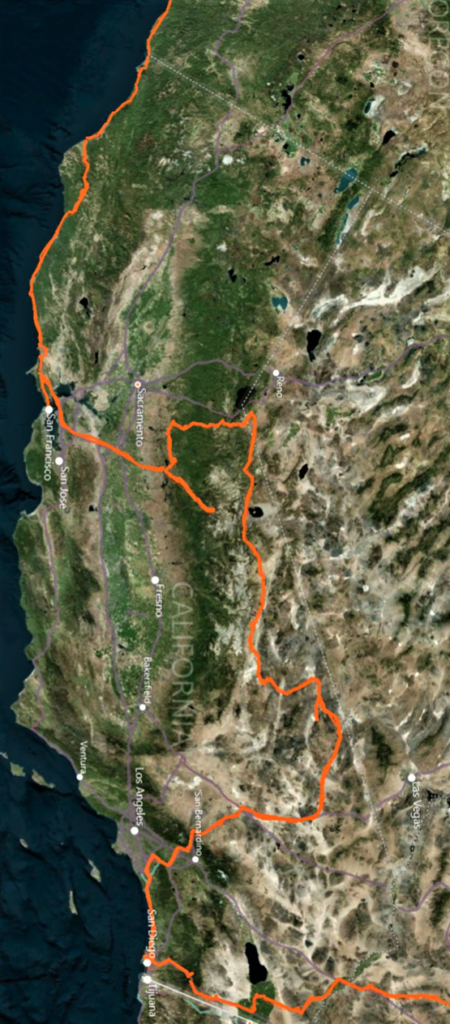
Our first stop after crossing the state line – the Imperial Sand Dunes –

could not have been more different from the green oasis where we spent our first three nights in California, on a hill overlooking San Diego.

The area was in full Spring bloom. It could have been England –





if it wasn’t for the cactuses

and the Anna’s hummingbird.


San Diego is one of the USA’s most attractive cities. We visited the old town,



and spent time in Balboa Park.


We particularly enjoyed the Japanese garden.


It was a great place to relax.

At Oceanside, north of San Diego, we had our first proper view of the Pacific;




and Californians doing what Californians do at the beach.



Driving east on a Sunday, we were happy to be travelling against the traffic on the road linking Los Angeles with Las Vegas.


We spent the night at Galico Ghost Town – a silver mine abandoned in the late nineteenth Century. Now partially restored as a tourist attraction.




We pulled off Interstate 15 at the small town of Baker to refuel and grab a hot-dog and bumped into Jim ‘Jet’ Neilson

and his jet-powered car.


Jim was happy to explain that he held the land-speed record (for a vehicle with rubber tyres on a concrete surface) of 404 m.p.h. and I was happy to buy one of his T-shirts.

We drove the road from Baker to Death Valley through a fierce sandstorm.

Our first views of Death Valley were through a dense haze of wind-blown sand.




Death Valley was formed when the earth’s plates ripped apart forcing the east side down and the west side up. At 282 feet below sea level, the salt flats in the Badwater Basin are the lowest point in North America.


The small white marker set in the rock-face above the vehicle indicates sea level.
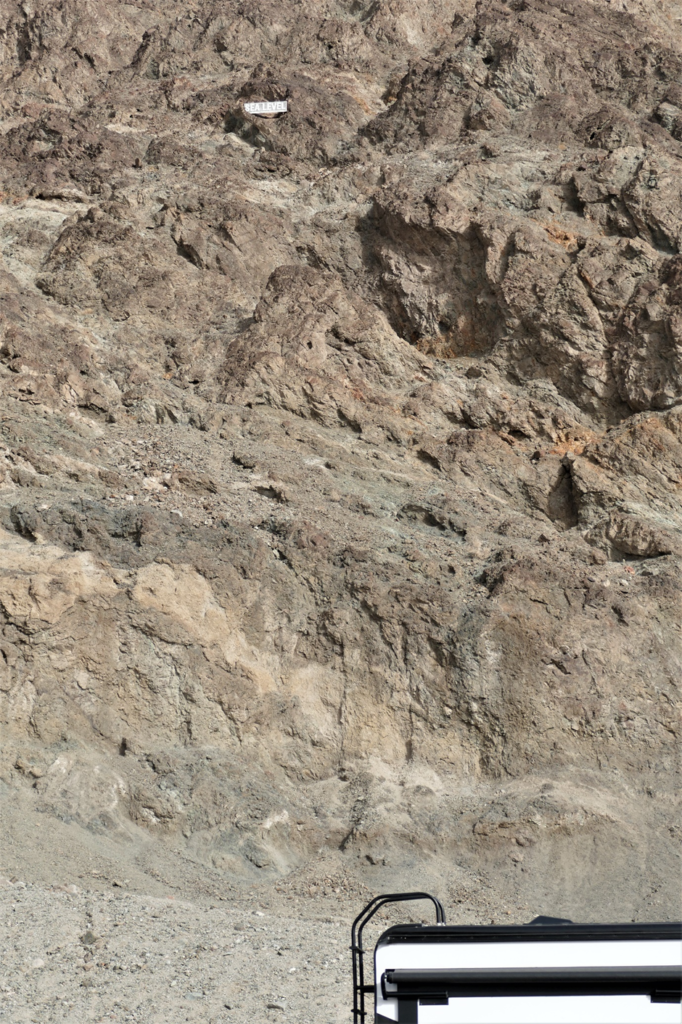
Wind and the occasional flash flood (it is the driest National Park in the USA) have done the rest – carving gulleys

and weathering the sandstone.

The wind dropped overnight and the following day the air was a little clearer.
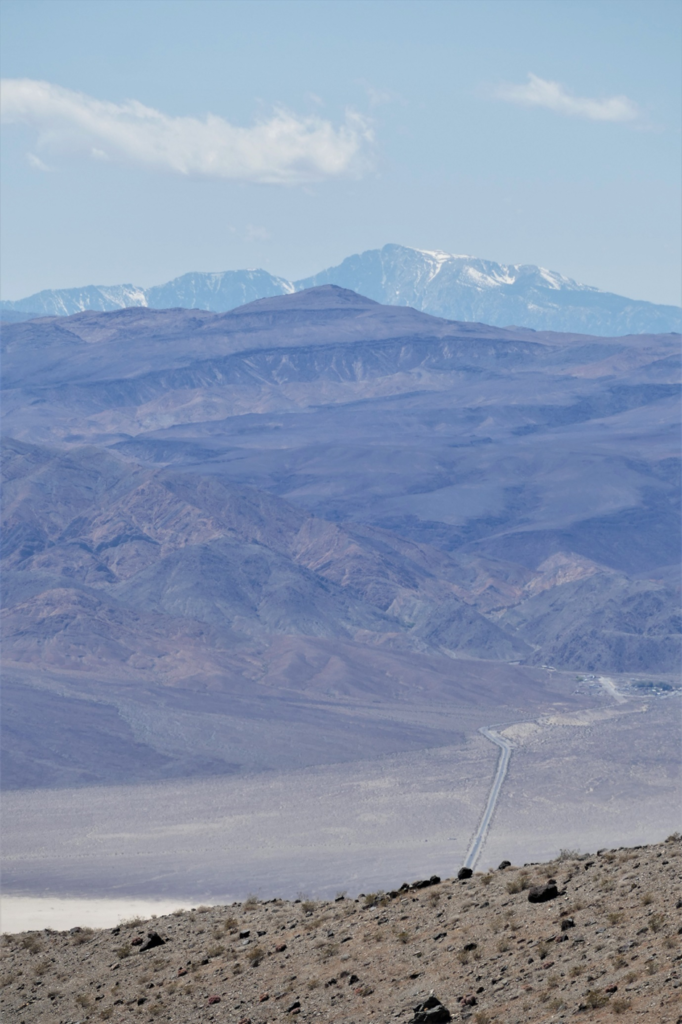



To complete its list of undesirable qualities, the highest ever temperature on Earth was recorded at Death Valley – 139°F.
Despite the extreme and hostile environment, enterprising Americans found ways of making money out of Death Valley. One was to extract and refine the borax that had accumulated in the Valley basins.

The refined product was shipped in a wagon train hauled 160 miles to the closest railroad by a team of 20 mules.

The workers, many of whom were Chinese immigrants, were paid $1.30 per day – with deductions for board and lodging.
Production had to pause in the Summer months – not to spare the workers, but because the process of borax extraction becomes unworkable at temperatures above 120°F.
We spent our second night on the edge of the National Park at Panamint Spring.




We travelled north through the eastern Sierra,

with the snow-capped peaks of the Sierra Nevada on our left;


passing Mono Lake – an ancient soda lake whose water is twice as saline as the sea.

The eastern Sierra has desert conditions because the mountain range blocks rain clouds from reaching it from the Pacific.
This explains the dramatic change in climate and landscape when we turned west. Snow was falling as we drove up and through the Carson Pass (the more southerly routes through the Sierra Nevada were all closed due to snow).



On the other side, all was green and lush.




Yosemite was our last stop in the Sierras. We drove into the Valley on a wet and misty Easter Saturday.



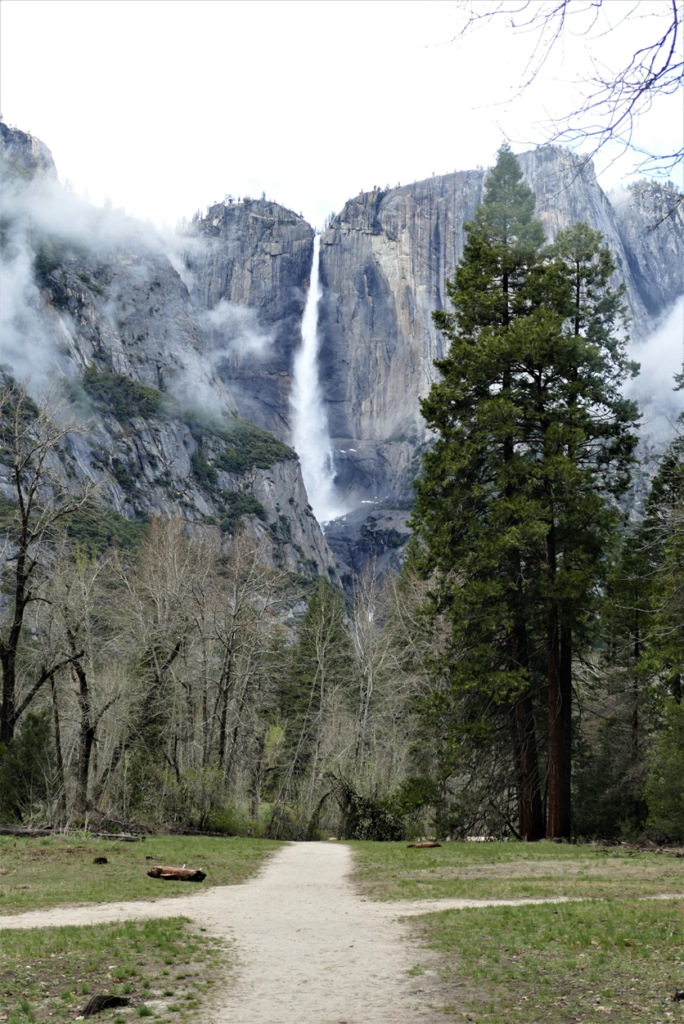
The 3,000 feet high granite face of El Capitan was shrouded in low cloud.

and the rain had augmented the snow-melt pouring over the Yosemite Falls.

We drove past huge vineyards on the drive back to the coast.


We spent a few days at Olema, close to the Point Reyes National Seashore.


The reserve is laced with walking trails,

and the ancient woodland on the cape is full of characterful trees.




Point Reyes is on the San Andreas fault-line. The peninsula is part of the Pacific Plate and is sliding past the mainland, which is part of the North American Plate. The Pacific Plate is moving northwards at an average rate of 1-2 inches each year. The actual movements happen in sudden, unpredictable bursts. The last caused the earthquake and fire that devastated San Francisco in 1905.
A fence that straddles the fault-line split when the plates shifted in 1905, and the two sections of the fence moved apart by 16 feet.

We left the RV at Olema and took the bus to San Francisco for a brief holiday; with a view of the city skyline from our hotel room.

We walked the city’s famously hilly streets,



visited Pier 39 and Fisherman’s wharf,

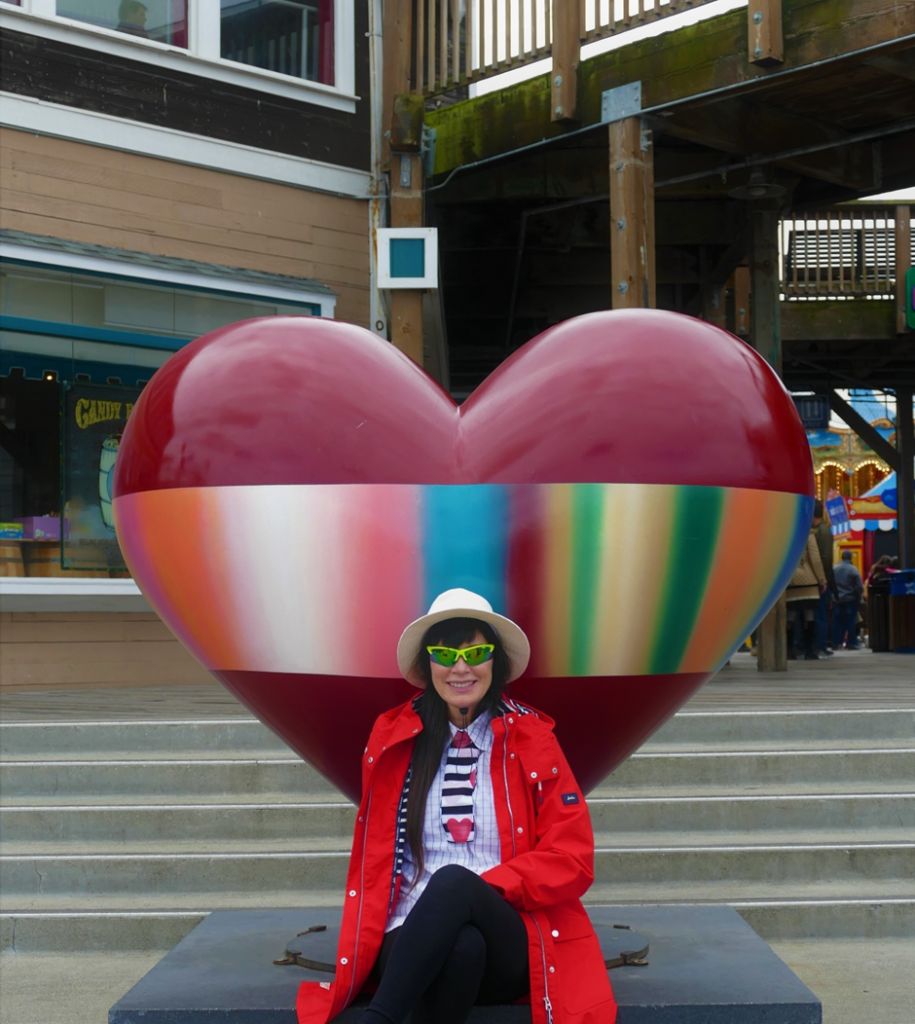
with its colony of noisy and noisome sealions



and view of Alcatraz.

We discovered our inner child at the Musée Mécanique’s penny arcade and



spent a morning at the de Young Museum,

and a sunny afternoon in Golden Gate Park.


Refreshed by our city break, we drove the serpentine Highway 1 that follows the rugged coastline of northern California;



with stops at Bodega Bay



and Westport.



We diverted inland to spend two nights at the Humboldt Redwoods State Park.


The walking trails leading off the ‘Avenue of the Giants’

took us into some of the last remnants of untouched, coastal redwood forest (more than 95% of the original old-growth redwood forest has been felled since the first American settlers arrived from the east).





We returned to the coast and spent two nights at an RV park, north of Trinidad

that has been colonised by a herd of wild elk.


We spent a couple of hours on the nearby beach


and visited another patch of untouched forest, at the Prairie Creek Redwoods State Park near Orick


(it’s a chipmunk).
Continuing up Highway 101, we crossed into Oregon.
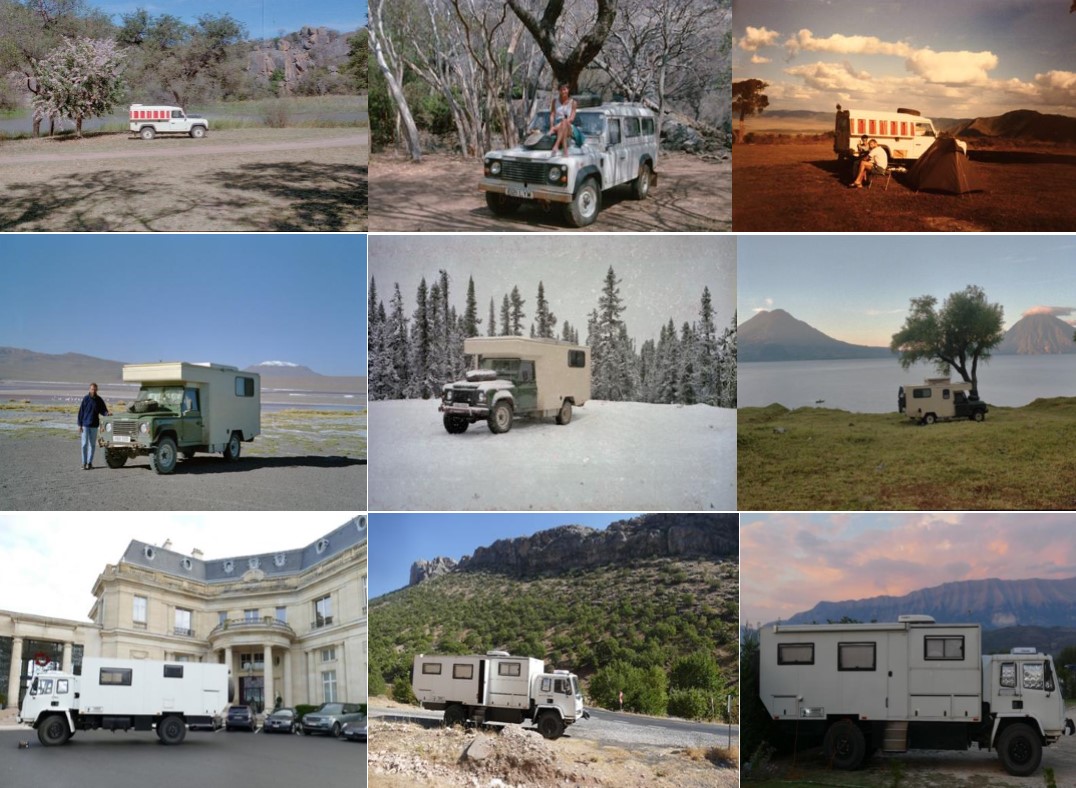
Looks terrible xx
Black bins today!
Very nice!
You quite obviously have documentary skills. Both written and photographic.
Great journal.
Bet you’re missing Orpington?
Hello Paul and Danielle, what a contrast in weather and environments! Sand storms in the desert, snow and then lush green countryside. Waiting to see what comes next … Take care and enjoy the rest of your trip. Joanna & Paul xx
Hello Danielle and Paul from Portugal!
Your photos look amazing! We loved your visit at NASA and it is always a pleasure to follow your adventures. We were very surprised that you had snow!! The canyons looked very cool.
We wish you a good ending of your trip and to have a safe travel back home.
On our end, we reached the Algarve today and we’ll go visit the caves tomorrow, as you did a few years ago.
With love,
Lisane et François xxx